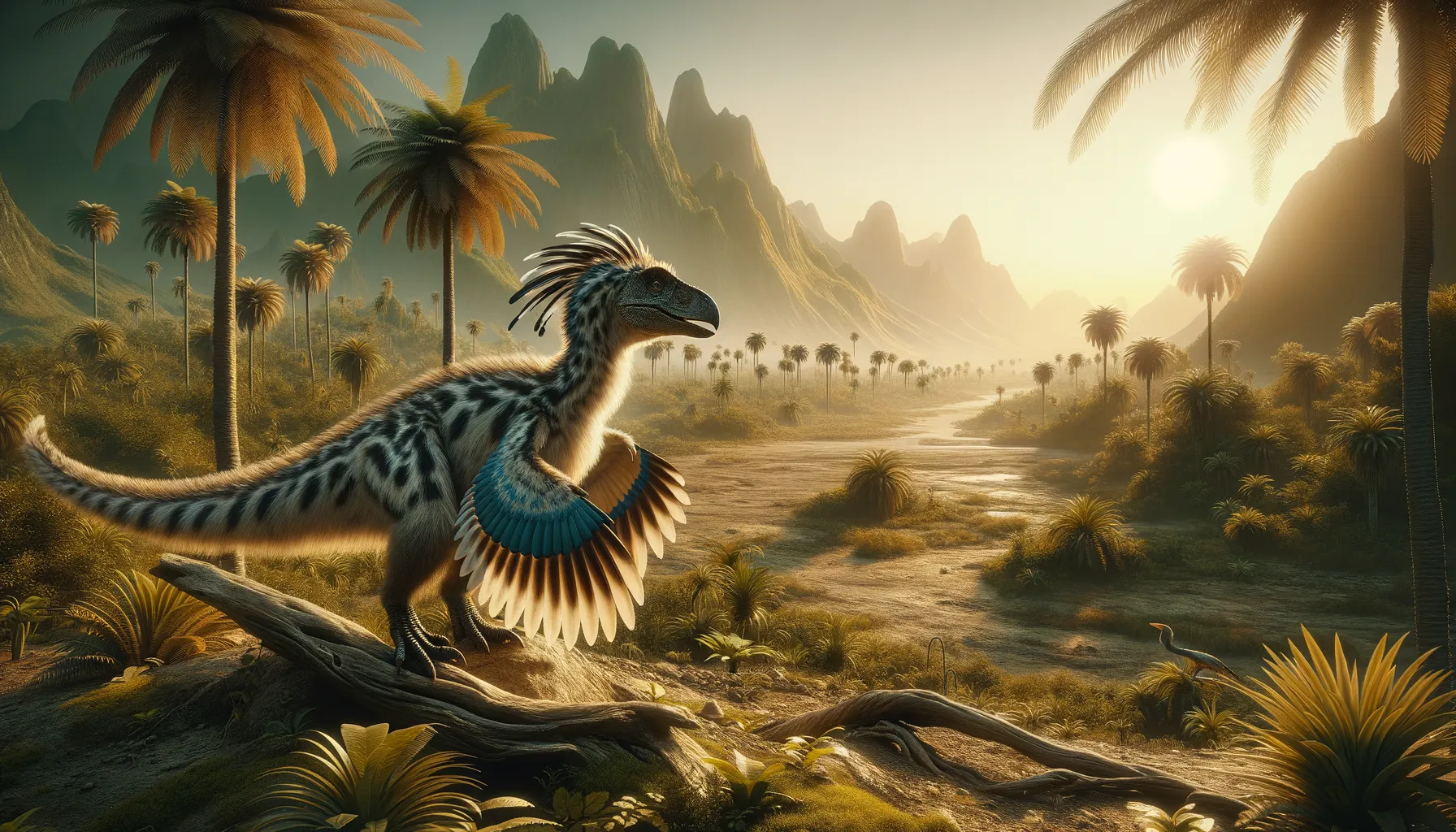
Similicaudipteryx
Bridging ancient scales to modern feathers.
Period
Cretaceous
Length
About 3-4 feet in length.
Height
Roughly 2-3 feet tall at the hips.
Weight
Approximately 11-13 pounds (5-6 kg).
Similicaudipteryx was a small, feathered dinosaur that lived during the Early Cretaceous period. Known for its bird-like features, it offers a glimpse into the link between dinosaurs and modern birds. Its feathers provided it not only with the ability to regulate temperature but also may have played a role in display. Discoveries of this dinosaur have helped paleontologists comprehend the evolution of feathers and the complexities of dinosaur behavior and ecology.
Diet
Similicaudipteryx is believed to have been an omnivore. Its diet would have consisted of small animals and insects, alongside various plant materials. This varied diet contributed to its adaptability in different environments.
Hunting
Due to its small size, Similicaudipteryx could have used its agility to catch insects and small prey. It might have foraged for food using both sight and sound, employing its feathers for balance and stealth while hunting or escaping predators.
Environmental challenges
Similicaudipteryx faced the challenge of predators being a small dinosaur in the prehistoric world. It had to navigate a landscape dominated by larger carnivorous dinosaurs. Seasonal changes and climatic shifts also posed significant challenges, requiring adaptability to survive fluctuating conditions. Adaptation to these aspects was key in maintaining its presence in the ecosystem.
Speed
Slow moving, likely due to its small size.
Lifespan
Estimated to live up to 10-20 years in the wild.
First discovery
Discovered in China in the early 21st century.
Fun Facts
- Similicaudipteryx is known for its beautiful, feathered wings, which suggest it was one of the early relatives of birds.
- This dinosaur lived during the early Cretaceous period, around 120 million years ago, in what is now China.
- The name Similicaudipteryx means 'similar to Caudipteryx', highlighting its resemblance to another feathered dinosaur.
- Unlike many other dinosaurs, Similicaudipteryx had two types of feathers: short, down-like feathers and longer, quill-like feathers on its arms and tail.
- Paleontologists believe that its feathers might have been used for display rather than flight, perhaps to attract mates or intimidate rivals.
- Similicaudipteryx was relatively small compared to other dinosaurs, estimated to be about the size of a modern turkey.
- Fossils of this dinosaur have provided key insights into the evolution of feathers in dinosaurs and the origins of birds.
Growth and Development
Similicaudipteryx demonstrated unique growth patterns, notably in its feathers, which changed structure as it matured. Juveniles had shorter feathers, which grew longer as they aged. This change in feather structure played a role in its growth, affecting aspects such as thermoregulation and social display. Understanding these growth stages provides insight into the development of feathered dinosaurs.
Habitat
This dinosaur lived in what is now China, where it inhabited forested areas. Its environment was rich with diverse plant life, providing ample food sources. It was a habitat with plenty of cover, ideal for hiding from larger predators. Streams and rivers in its habitat likely provided water and additional dietary options.
Interaction with other species
Similicaudipteryx likely coexisted with numerous other organisms in its environment. It may have competed for resources with other small dinosaurs and animals. Its presence also indicates interactions with predators, necessitating advanced evasive behaviours. These interactions would have contributed to its social and survival strategies.
Natural lifespan
The natural lifespan of Similicaudipteryx could have ranged between 10 to 20 years.
Reproduction
Similicaudipteryx likely reproduced by laying eggs, as modern birds and many other dinosaurs did. Fossil evidence suggests nests were built, possibly in hidden or protected locations to avoid predation. Parental care might have been present, though specific behaviours remain speculative.
Social behaviour
Similicaudipteryx may have exhibited social behaviours typical of small theropods, possibly forming small groups. Its feathers could have played a role in visual communication and mating displays. Social interaction would have been crucial in its development and survival strategies.
Fossil locations
The most significant Similicaudipteryx fossils have been found in China's Yixian Formation. These fossils are crucial in studying feather development and evolution in theropod dinosaurs. Future discoveries may expand known locations and provide further insights into its range.
